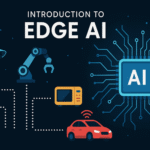For centuries, humanity has looked up at the night sky with wonder, curiosity, and ambition. Space exploration was once the domain of a few powerful nations, requiring enormous budgets and decades of planning. However, in 2025, technology is transforming space exploration into a faster, more accessible, and more innovative endeavor. From private space companies and reusable rockets to artificial intelligence and 3D printing on Mars, technology is not just shaping the future of space-it is making the impossible possible.

The Rise of Private Space Companies
In the past, space exploration was led almost exclusively by government agencies like NASA, Roscosmos, and ESA. Today, private companies such as SpaceX, Blue Origin, and Rocket Lab are taking center stage.
- Reusable Rockets: One of the most groundbreaking innovations has been reusable rocket technology pioneered by SpaceX. By landing and reusing boosters, the cost of space travel has dropped dramatically.
- Commercial Space Travel: Companies are pushing the idea of space tourism, where civilians can travel to orbit or even the Moon. While still expensive, these developments bring us closer to making space accessible to non-astronauts.
- New Competition: The private sector’s involvement accelerates innovation, as companies compete to deliver better, cheaper, and more efficient space solutions.
Artificial Intelligence in Space
AI has become an essential tool in modern space missions. Space is vast, unpredictable, and dangerous, making human control alone insufficient.
- Autonomous Rovers: NASA’s Perseverance Rover on Mars uses AI to navigate rough terrain and conduct experiments with minimal human guidance.
- AI for Data Processing: Space missions generate vast amounts of data. AI helps analyze this data quickly, identifying patterns and anomalies that humans might miss.
- Predicting Failures: AI systems can detect potential malfunctions in spacecraft and provide early warnings, reducing risks during missions.
Robotics Beyond Earth
Robotics is revolutionizing how we explore space. Sending humans to distant planets is risky and expensive, but robots can go further and endure harsher environments.
- Robotic Arms and Drones: Tools like the Canadarm on the International Space Station (ISS) and Mars helicopters such as Ingenuity expand our ability to work in space.
- Asteroid Mining Robots: Companies are exploring the use of robotic miners to extract valuable resources from asteroids, potentially fueling future economies.
- Human-Robot Collaboration: On future missions to the Moon and Mars, robots will work alongside astronauts to perform heavy lifting, construction, and repairs.
3D Printing and Manufacturing in Space
One of the biggest challenges in space exploration is transporting heavy equipment from Earth. Technology is addressing this with 3D printing and in-situ resource utilization (ISRU).
- 3D Printing Tools: Astronauts on the ISS already use 3D printers to manufacture spare parts on demand, reducing reliance on resupply missions.
- Building Habitats: Future missions to the Moon or Mars may use 3D printing with local materials (like lunar dust or Martian soil) to construct shelters and infrastructure.
- Medical Supplies: 3D-printed medical devices or even bio-printed tissue could help astronauts survive long missions far from Earth.
Role of Satellites and Miniaturization
Satellites are the backbone of modern space technology. Advances in miniaturization are transforming their role.
- CubeSats and Nanosatellites: Small, low-cost satellites allow universities, startups, and developing nations to participate in space exploration.
- Earth Observation: Satellites monitor climate change, natural disasters, and agriculture, providing data crucial for life on Earth.
- Space Internet: Mega-constellations like Starlink are building global internet coverage, reshaping communication for billions of people.
Space Medicine and Human Survival
Sending humans deeper into space requires solving major health challenges. Technology is providing new solutions.
- Radiation Protection: Advanced materials and wearable devices are being designed to shield astronauts from harmful cosmic radiation.
- Closed-Loop Life Support: Systems that recycle air, water, and waste are being improved to support long-duration missions.
- Monitoring Health: Wearable devices track astronauts’ physical and mental well-being in real-time, alerting doctors on Earth.
International Collaboration and the Space Race 2.0
While private companies dominate headlines, international cooperation is equally important. Projects like the Artemis Program, aiming to return humans to the Moon, involve NASA, ESA, JAXA, and private players. Meanwhile, China is advancing rapidly with its own lunar and Mars exploration programs.
This “Space Race 2.0” combines collaboration and competition, pushing humanity further into the cosmos.
The Future: Mars, Asteroids, and Beyond
The ultimate goal of current space technology is clear: to expand human presence beyond Earth.
- Mars Colonization: SpaceX is leading efforts to send humans to Mars in the coming decades. Technologies in propulsion, life support, and habitat construction will play key roles.
- Asteroid Mining: Extracting metals and water from asteroids could fuel spacecraft and open trillion-dollar industries.
- Interstellar Exploration: Long-term, technologies like nuclear propulsion or even theoretical warp drives may allow us to explore beyond our solar system.
Conclusion
Technology is not just improving space exploration, it is redefining it. From reusable rockets and AI-driven rovers to 3D-printed habitats and nanosatellites, humanity is closer than ever to becoming a multi-planetary species.
While challenges like radiation, cost, and long-term survival remain, the progress made by 2025 shows that space exploration is no longer science fiction, it’s science fact. The innovations of today are paving the way for tomorrow’s explorers, ensuring that the dream of reaching Mars, mining asteroids, and even venturing beyond the solar system is within our grasp.
The future of space exploration is bold, innovative, and limitless, and technology is the key to unlocking it. Also Check The Role of Technology in Disaster Prediction and Management 2025



